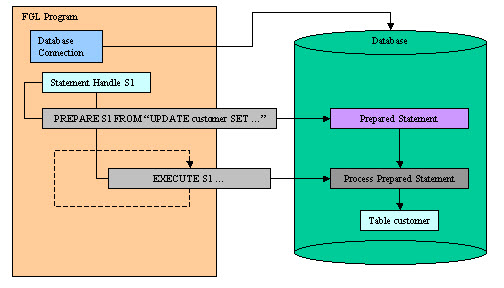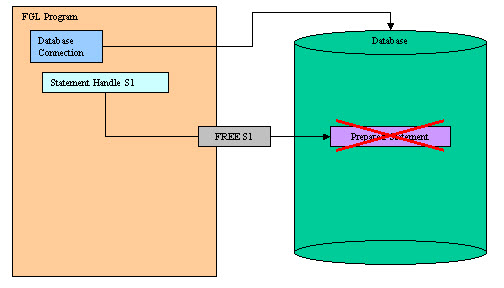Understanding dynamic SQL
This is an introduction to dynamic SQL programming.
Basic SQL instructions are part of the language syntax as static SQL statements, but only a limited number of SQL instructions are supported this way. Dynamic SQL management allows you to execute any kind of SQL statement, hard coded or created at runtime, with or without SQL parameters, returning or not returning a result set.
In order to execute an SQL statement dynamically, you must first PREPARE the SQL statement to initialize
a statement handle, then EXECUTE the prepared statement one or more times:
Figure: Dynamic SQL management diagram

When you no longer need the prepared statement, you can FREE the statement handle to release allocated resources:
Figure: FREE statement diagram

When using insert cursors or SQL statements that produce a result
set (like SELECT), you must declare
a cursor with a prepared statement handle.
Prepared SQL statements can contain SQL parameters by using ? placeholders in
the SQL text. In this case, the EXECUTE or OPEN instruction
supplies input values in the USING clause.
PREPARE
outside the loop, together with EXECUTE inside the loop, to eliminate overhead
caused by redundant parsing and optimizing.The EXECUTE
IMMEDIATE instruction prepares and executes an SQL statement in a single
instruction. SQL parameters and result sets cannot be used with EXECUTE
IMMEDIATE.
The base.SQLHandle
built-in class is a 3GL API to execute SQL statements dynamically and perform SQL introspection (to
get result set column types).